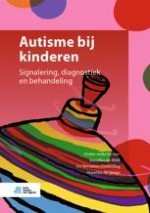Samenvatting
Een autismespectrumstoornis (ASS), in korte vorm wel aangeduid als ‘autisme’, is een veelvoorkomende, aangeboren, neurobiologische ontwikkelingsstoornis die kan worden vastgesteld aan de hand van een vaste set criteria zoals gedefinieerd in de vijfde editie van de Diagnostic and Statistical Manual of Mental Disorders (DSM-5; American Psychiatric Association 2013). De klinische presentatie van autisme is zeer uiteenlopend; van mensen met een ernstige verstandelijke beperking zonder functioneel gebruik van taal, tot intellectueel hoog-functionerende mensen die helemaal geen taalontwikkelingsproblemen in de voorgeschiedenis kennen. Wat mensen met autisme delen, zijn problemen op het gebied van sociale communicatie en zich verplaatsen in gedachten en emoties van anderen, moeite zich aan te passen aan veranderende omstandigheden, interesses die beperkend of zeer intens kunnen zijn, en een ‘andere’ manier van zintuiglijke prikkelverwerking.

